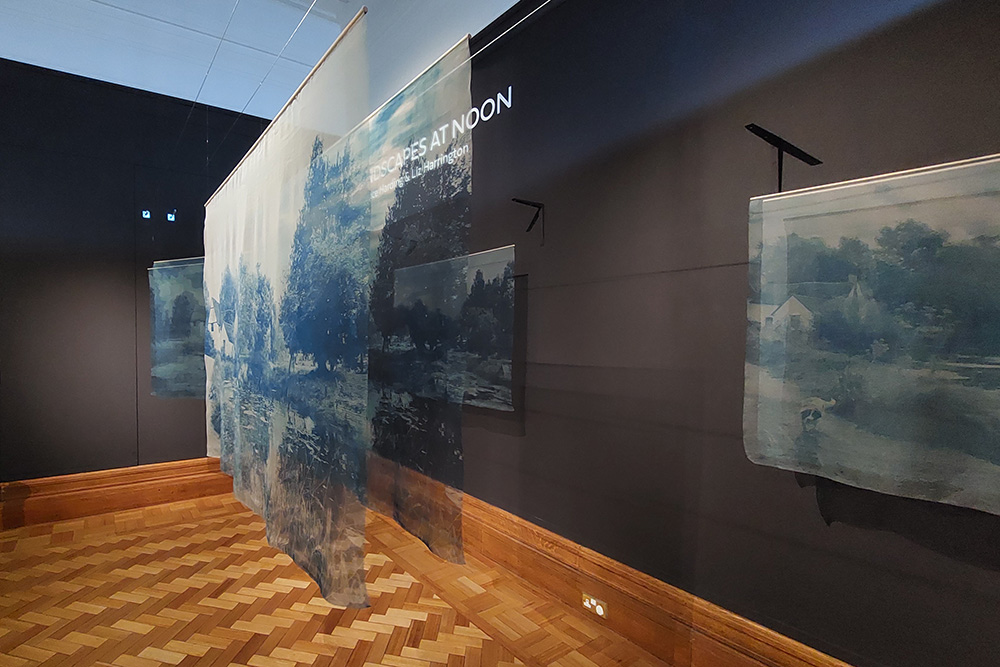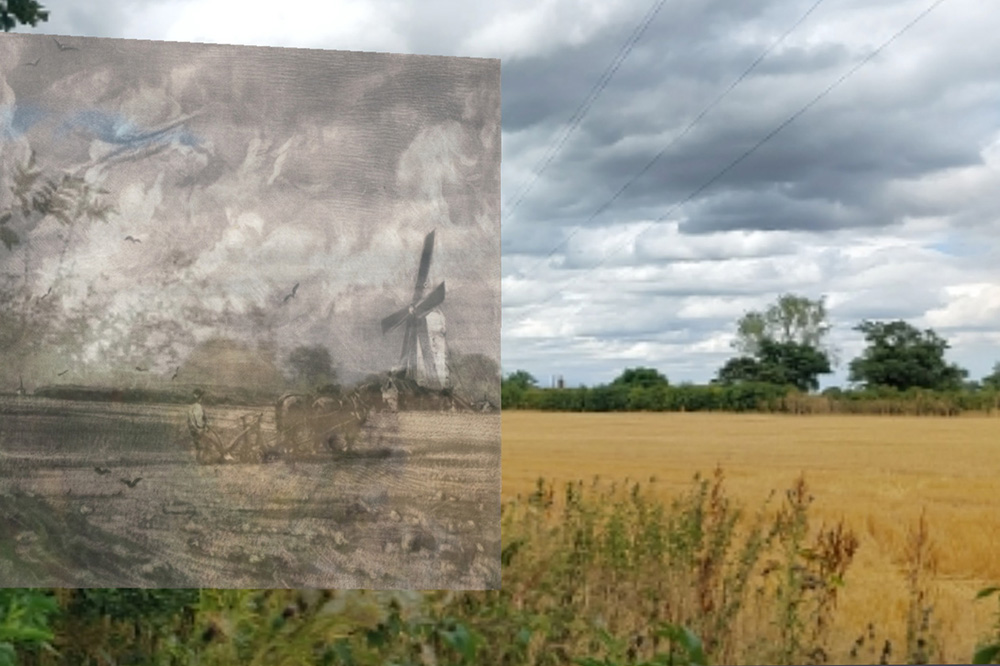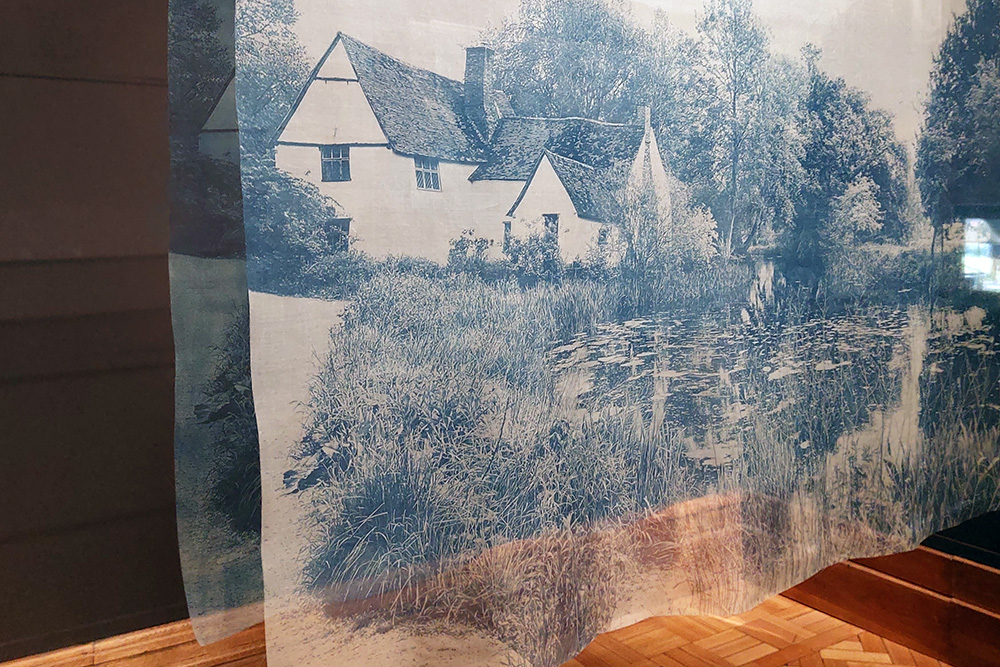Alternative Constable
by Andy Corrigan
When I was 13, my parents gave me my first SLR camera as a birthday present. The seed of a passion for all things photography had been planted. I was fascinated by the magical way in which the combination of light and chemicals can create an image. From the moment the secrets of this magic were first tamed, photographic technology has been consistently advancing at great pace. But interacting with it in its most raw form, these days referred to as ‘alternative photographic processes’, still retains a spell-like charm over those who encounter it and a sense of awe the experience evokes.
So my ears pricked-up when, on Walk A, Roisin Rampley (National Trust Property Curator, Anglesey Abbey) started talking about a project that had been commissioned to celebrate the 200th anniversary of Constable’s painting ‘The Hay Wain’ in 2021. In the ‘Landscapes at Noon’ project, artists Laurence Harding and Liz Harrington had used an early photographic process called cyanotype to create images of Willy Lott’s house on sheets of silk at the Flatford site. Needless to say, I was disappointed to have not known about it when it was on display!
You can watch this short film about the ‘Landscapes at Noon’ project, in which the artists Laurence Harding and Liz Harrington discuss and demonstrate their approach and technique:
Alternative photographic processes and camera-less photography also cropped up on Walk B after a conversation, about using wild plants as dyes and fixatives, led to us discussing ways of physically incorporating elements of nature into the image making process. The cyanotypes created for ‘Landscapes at Noon’ had been developed using water extracted from the River Stour, a wonderful way to incorporate a sense of place and for nature itself to become a part of the creation process. We also discussed photographic artist Susan Derges, who specialises in using camera-less photographic processes within the natural landscape. For example, she creates large scale photograms by submersing photographic paper into bodies of water, using the moon-light to expose them. Perhaps at a different end of the spectrum of using nature, we also discussed another camera-less photographic artist, Pierre Cordier, who’s work intersects the boundaries of painting and photography in a technique he developed called the chemigram, which uses chemical and physical reactions to create photographic images.
We were then joined on Walk C by Emma Roodhouse, Art Collections & Learning Curator at Colchester and Ipswich Museums Service, who discussed ‘Recreating Constable’, the exhibition at Christchurch Mansion in Ipswich that was open at the time. The exhibition took the work of Constable and his Suffolk contemporaries as inspiration to explore the work created for the ‘Landscapes at Noon’ project – so I hadn’t missed my chance to see it after all!

– Landscapes at Noon, installed at Christchurch Mansion, Ipswich, by kind permission of the artists and gallery
I eagerly anticipated an interesting trip to see the exhibition for myself back in August 2022, but what I didn’t expect was how deeply the sensation of partaking in the work mirrored the augmented reality process that we have been using in our ‘Walking with Constable’ project. Suspended in the gallery space, the viewer could move around and between the silk cyanotypes, which are so fine that they have a transparency. The reason behind this was ostensibly to invoke a sense of time, place and memory, so the fact that it brought to my mind, and so vividly, the sense of what it was like to view our prints using augmented reality at the locations of their settings, seems such a perfect parallel as to steadfastly weave our wandering thread to link them together.

– A screen-capture of ‘Spring (P.232-1954 (1)b)’ as viewed in augmented reality on East Bergholt Common
You can see more examples of screen-capture images demonstrating our augmented reality views in the collection of images that we recorded on our trips:
